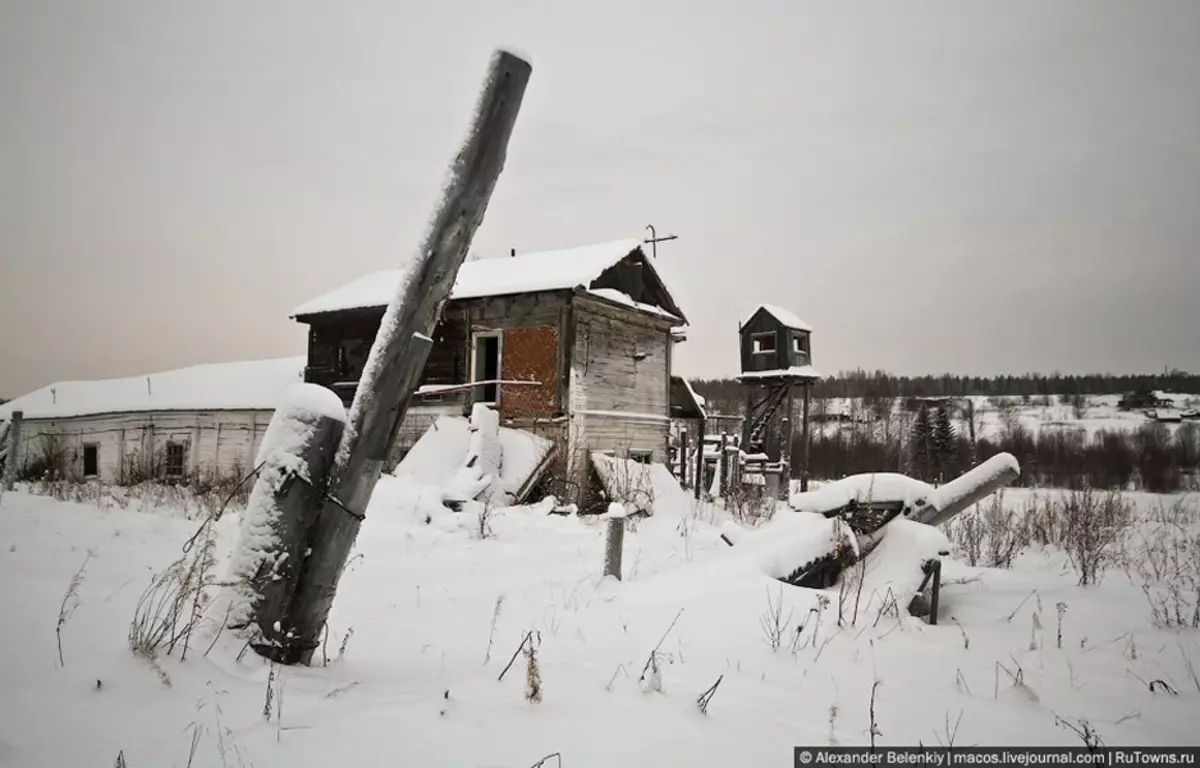Cities - Living creatures. They are born, develop, then begin to grow old - and finally dying. Sometimes they are killed, sometimes - cripples. And then one shell remains from the city - a dead body with unbearable attractiveness. How so? Previously, there was a school, children were running every morning - and now the wind will only work, and nature gradually dismisses the space.
Mologa, Yaroslavl region.
The city is first mentioned in the 12th century. Mologa was in an important, convenient for trading point, on the border between Yaroslavl and Tver Principities, and herself was the capital of the specific principality. Wealth city brought, above all, agriculture. On the filler meadows, they grazed cows from milk whose milk made oil in the Russian Empire.
Mologa lived until 1940, until the dams were built on the Volga. The water level was raised to 102 meters above sea level, and the city was at the level of 98 meters. Residents of the city began to relocate back in 1937, but this process was going for a long time and difficult. In 1940, the city was flooded.
According to legend, some residents refused to leave their homes and died under water. For another legend, people moved from the molot, then came to the shore of the Rybinsky reservoir on the left side of the mouth of the Volga and to the way to the whole families - however, it is still quite difficult to believe.
Now, Molokhman has earthworks (they and their descendants are scattered between the Rybinsky and its surroundings, Moscow and St. Petersburg), and in Rybinsk there is a museum museum and the Molokha region. From time to time, the descendants of Mologgan float on the shoe along the reservoir, they lower the wreaths in the water with candles, serve prayers. Sometimes because of the low-water, the city protrudes from the water - streets, foundations, core houses, cemetery fences and gravestones become visible.
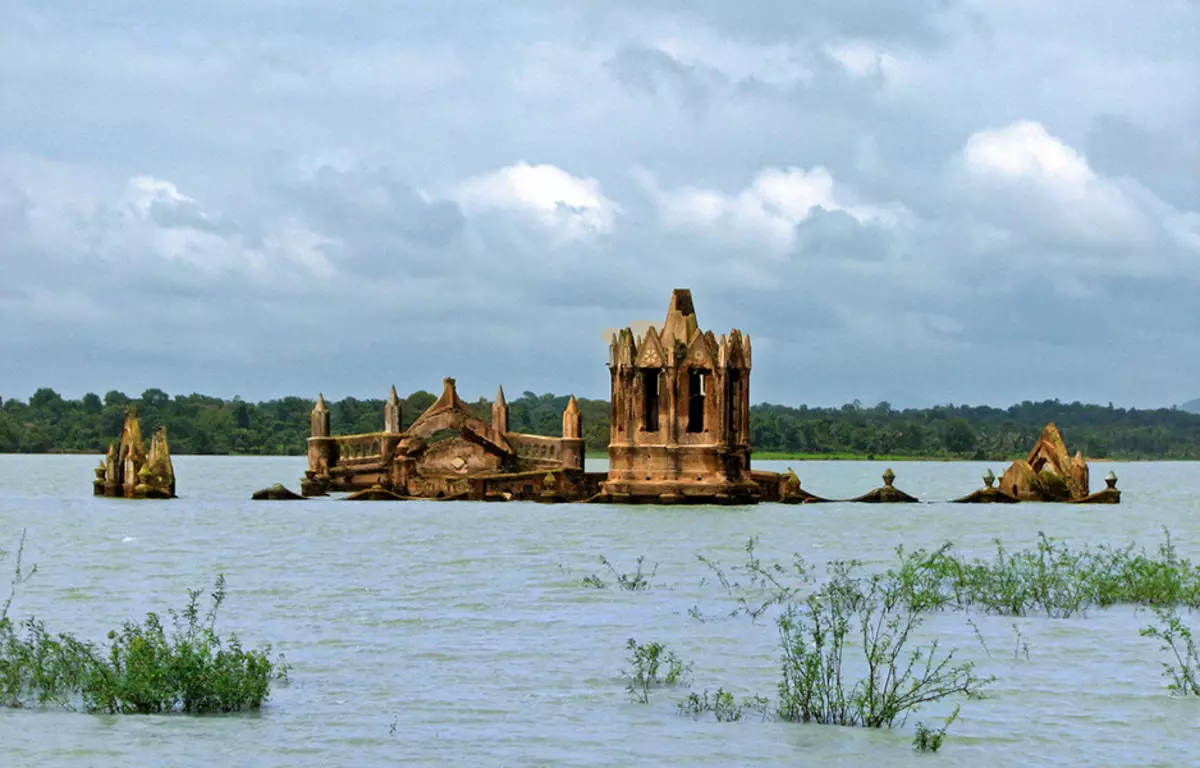
Kalyazin, Tver region
The Rybinsk reservoir is unique primarily by the fact that the whole densely populated area, the heart of Central Russia, inhabited since time immemorial times flooded. It is surprising that this crime was planned before the revolution of the Tsarist government, as well as the entire Soviet plan of electrification of the whole country.
One of the symbols of the Rybinsky reservoir - the bell tower of the Nikolsky Cathedral, sticking directly from the water opposite the city of Kalyazin. The entire central (nearest to the Volga) part of the city, including ancient, famous from the 12th century, the monastery and typical county development of Catherine times, was under water. The cathedral was disassembled, and the bell tower of 1800 buildings still sticks out of the water. In Malovodye, it is possible to walk on foot, and at high water, locals ride there by boats.
Strictly speaking, this is not a real ghost city: the population is even more than before flooding - there is a valid plant, an astronomical observatory, railway assembly, cottages ... But nevertheless, the history is clearly divided into the period before the catastrophe and the period after it.
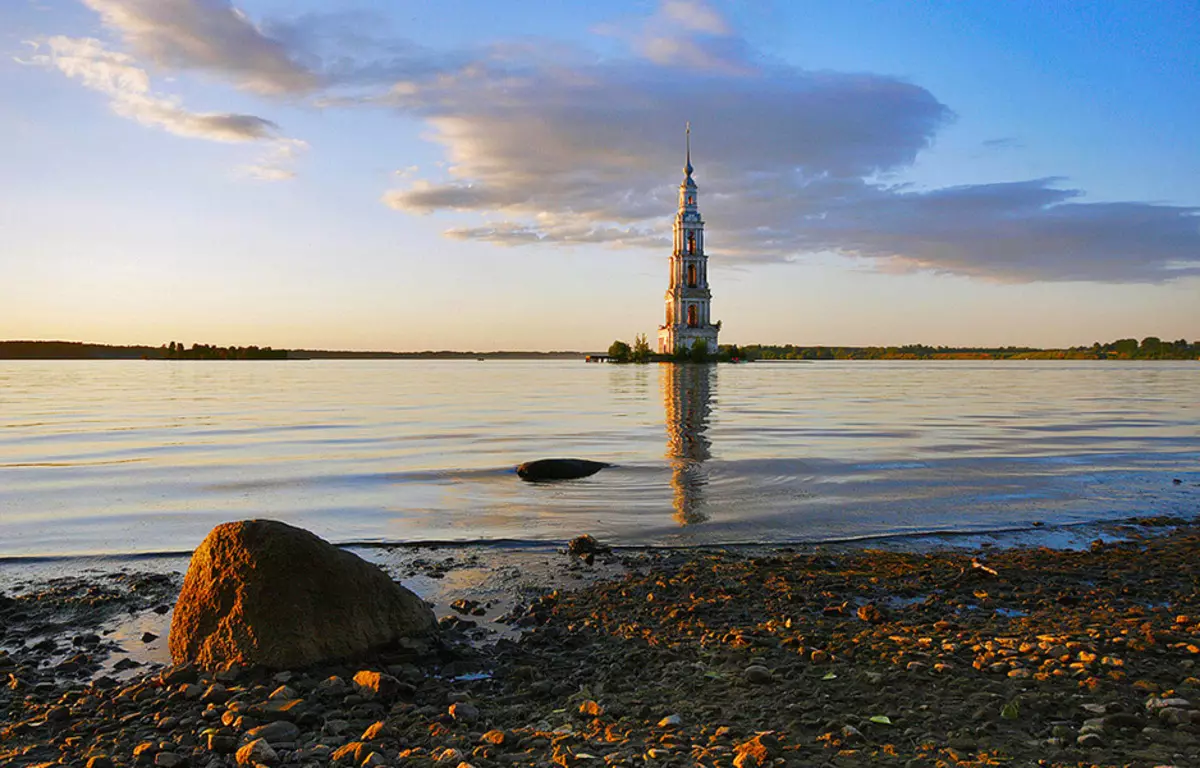
Charrhda, Vologda region
The village of Charhrond on the shore of the lake is not far from Kirillova, it was known from the 13th century. In the 15th century he was pressed by the richest Kirillo-Belozersky Monastery. Then the village became the city, entered the Okrichnin, was under the rule of Falsmitria II. And from the 18th century, Charrond began to die.
In the 17th century in the city and around it, about 14 thousand people lived. At the beginning of the 20th century - 450 people. Nowadays, according to various sources, then five live here, or eight people. Beautiful stone church of 1828, dilapidated at home, and a few old women on Zawalinka - so the earthly glory passes.
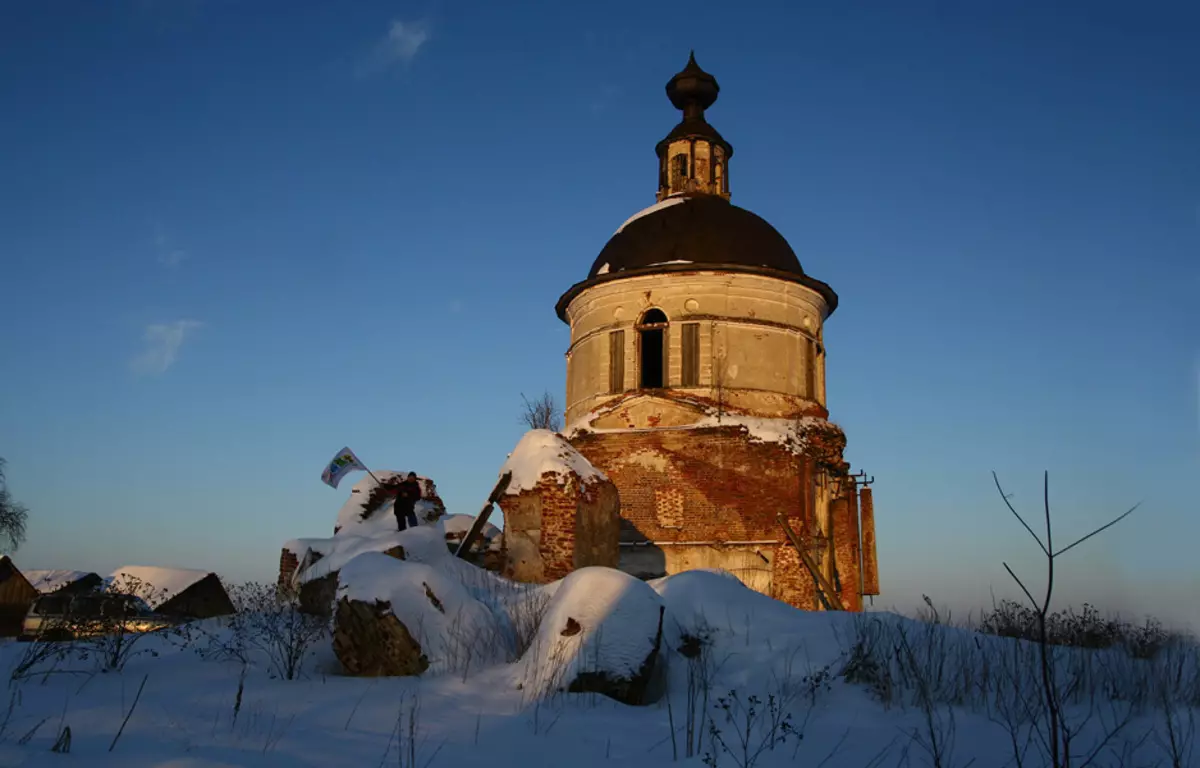
Empty, nonsense autonomous district
The city of Naversk is located 30 kilometers north of Naryan Mara. It was built in the 15th century as the supporting point of the Moscow principality in the lands of the northern pagans, at the main thing at that time the Ural road. In Eposhersk was a governor, garrison and warehouses. The tribes brought here here, the tribes brought Yasak, the tunnin tax, they also brought salt, ice cream fish and other goods.
But then, with the defeat of the Kazan Khanate and the opening of other ways to the east, the emotion rose began to lose its strategic importance. He was still an important settlement and a prison in the middle of the 17th century - it was here that the main Russian squalon was executed and one of the first real Russian writers - Avvakum Protopopa.
The fortress was dismantled under Empress Catherine, but the city continued to live to the middle of the twentieth century. In 1950, it remained 15 houses. In 1962, the last house was disassembled and splaved along the furnace, and the last resident of the city was left.
Now empty - is really an empty field on which the Poklonnaya Cross is at the estimated site of the burning of the Avvakum Protopopa, the temporary wooden Old Believer Church, several archaeological excavations - and that's it. "Being this place is empty" - well, yes, it turned out.
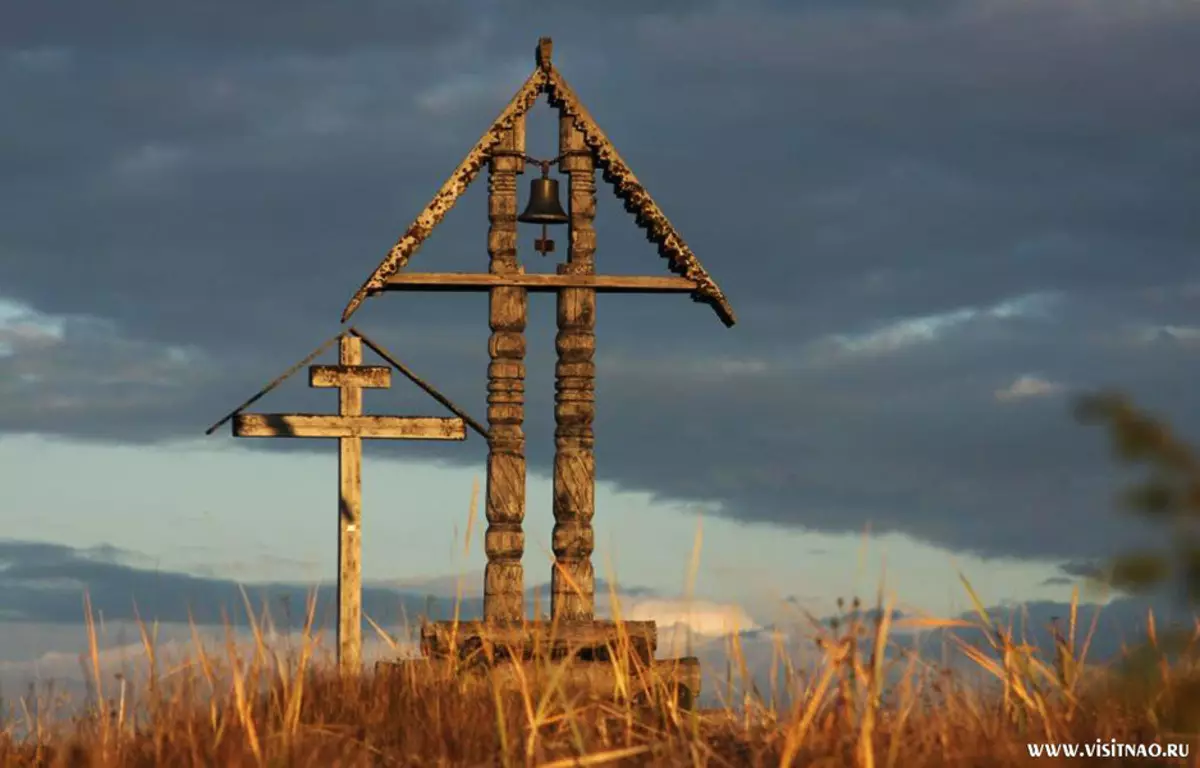
Amderma, Nenets Autonomous District
The village of Amderma was built in 1933 to extract fluorite. In addition, the settlement on the coast of the Kara Sea, in the Northern Ice Border of the USSR was an important point for the development of the Arctic. The airplanes who studied the Northern airmarshruts were launched here, there was one of the transit points of Expedition Otto Schmidt and the Laboratory of Eternal Merzlot.
Even when the prey of the fluorite began to slowly decline, in Amderma there was a few military units. In the eighties, five thousand people lived here. Now - about five hundred. The military brought, all the plants and mines closed. The hydrometelaboratory, the airfield and the skeleton of the northern city, in which it was hard to live before, and now they simply do not need.
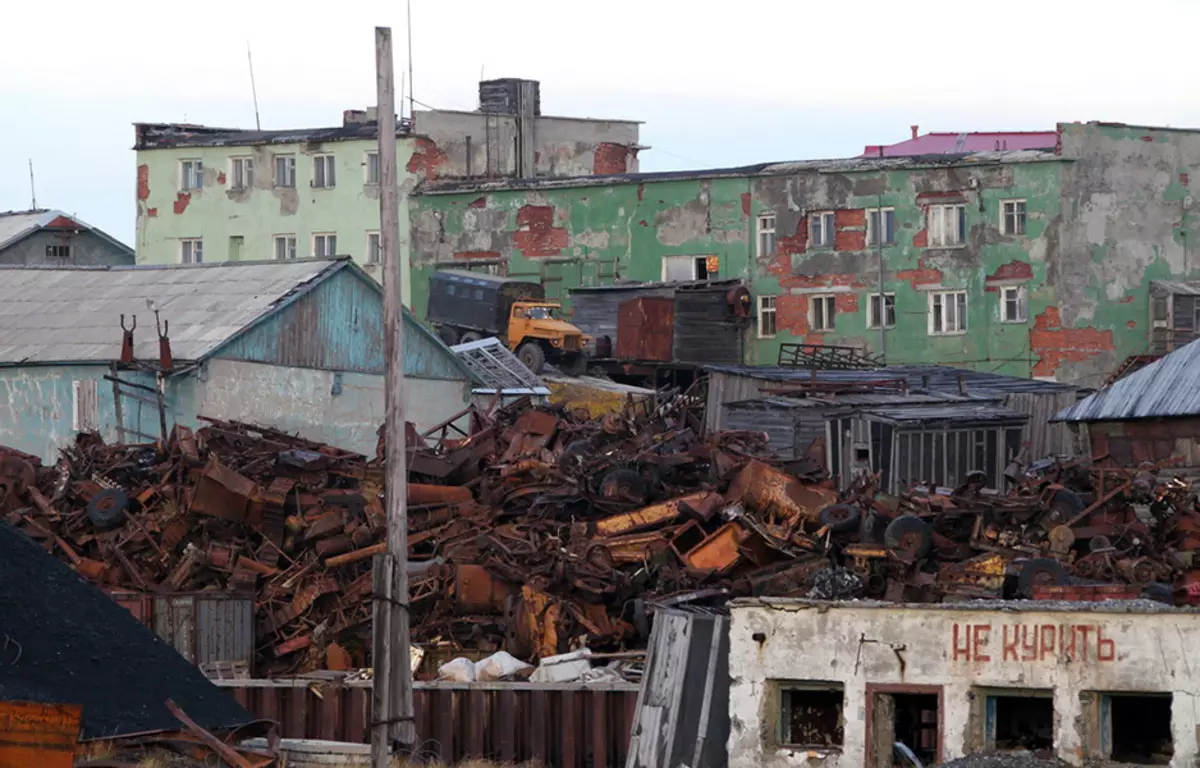
Iulin
In Soviet times - district center in Chukotka, urban type village on a tungsten-tin field. Several thousand miners and engineers, their wives, children, school, kindergarten, bakeries and hairdressers, and all this in monstrous climatic conditions, with fifty-degree frost and strong wind. In 1992, it became clear that the planned and unprofitable enterprise of the transition to the wild market would not survive. The village was evacuated and threw. There was a beautiful Stalinsky Ampire of DC, Shakhtarilation, Raidentiary and several barny-type houses.
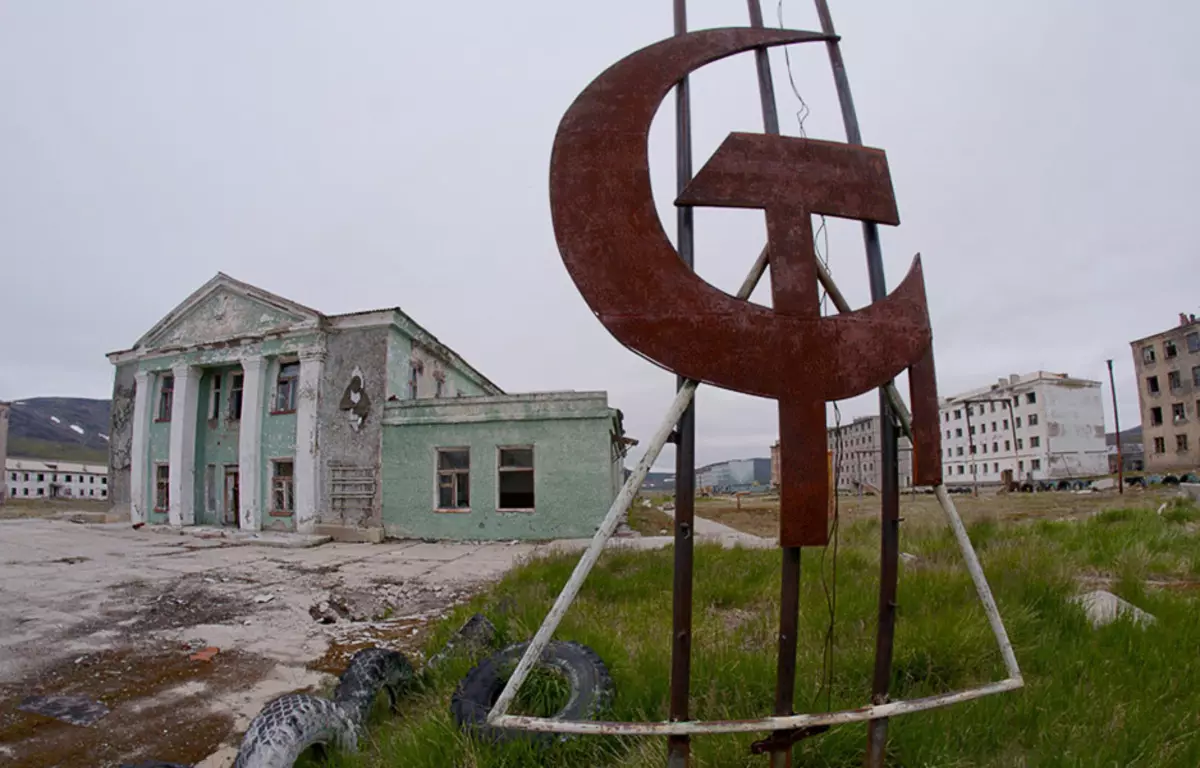
Perm-36. (Perm Region)
Perm-36 is not quite a city, to be honest. This is a camp for political prisoners, correctional colony of Kuchino or K-36, open in 1946. At first it was a colony for law enforcement officers who committed crimes, then - for state criminals and dissidents. Vladimir Bukovsky, Sergey Kovalev and many other anti-Sovers sitting here.
In 1988, the camp was closed, and in 1996 there was a museum opened to this day. There are barracks, medical unit, bath and laundry, workshops, shops and sawmills, which gave the name of the festival of contemporary art, which was held here every year.
Now, however, clouds were thickened over the museum: activists of the "the essence of time", referring to the former camp guards, they say that there was no special hell in the camps of the rigor, and even the political prisoners sat for a business, and therefore the museum must be closed, but the festival - dispersed. Well, it is especially interesting to this dead city in that he can definitely be reborn at any time.
